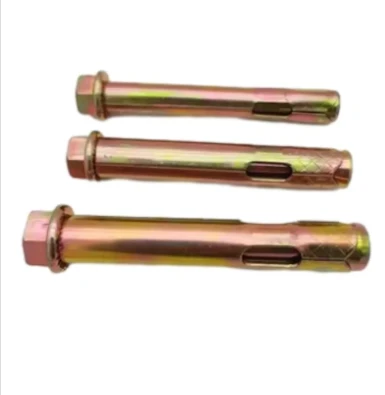Dec . 11, 2024 10:18 Back to list
Understanding the Applications and Benefits of Through Bolt Anchors in Construction
Understanding Through Bolt Anchors A Comprehensive Guide
Through bolt anchors are widely used in construction and engineering applications due to their strength and reliability. They are designed to provide secure fastening solutions for a variety of materials, including concrete, brick, and masonry. This article will delve into the workings, types, applications, and installation processes of through bolt anchors, providing a solid understanding of their importance in modern construction.
What is a Through Bolt Anchor?
A through bolt anchor, as the term suggests, is a type of anchor that passes completely through the material being fastened, with a nut and washer applied to the opposite side. This design allows for strong clamping force, making it suitable for heavy loads and structural applications. Unlike other types of anchors, through bolt anchors provide a more secure hold as they engage both the fastened material and the substrate, distributing the load evenly.
Types of Through Bolt Anchors
There are several types of through bolt anchors available, each suited for different applications. The most common types include
1. Expansion Bolts These anchors expand when the bolt is tightened, creating a secure grip in the base material. This is an excellent choice for heavier loads.
2. Sleeve Anchors Sleeve anchors have a sleeve that expands when the bolt is tightened, providing a strong hold in various base materials. They are often used for securing fixtures in normal-duty applications.
3. Lag Shields This type includes a shield that is installed into the base material and accepts a lag screw. They are often used in concrete or masonry applications.
4. Concrete Bolts Designed specifically for use in concrete, these bolts provide high pull-out resistance and are ideal for heavy-duty projects.
Applications of Through Bolt Anchors
through bolt anchor

Through bolt anchors have a wide range of applications across various industries. Here are some common uses
- Structural Installations They are commonly employed in structural engineering to attach beams, columns, and walls securely. - Mechanical Attachments Through bolt anchors are widely used in machinery and equipment installations, where strong and reliable fastening is crucial. - Outdoor Structures From playground equipment to fencing and railing systems, through bolt anchors ensure that outdoor structures remain safe and upright. - Interior Fixtures In building renovations and new constructions, they are often used to secure shelving, cabinetry, and heavy appliances to walls.
Installation Process
The installation of through bolt anchors involves several key steps
1. Preparation Begin by identifying the location for the anchor. Ensure that the area is clear of debris and that the material is appropriate for anchor usage. Proper measurements should be taken to ensure alignment.
2. Drilling Use a masonry drill bit to create a hole through the material. The diameter and depth of the hole must match the specifications of the through bolt anchor.
3. Inserting the Anchor After drilling, clean out the hole to remove dust and debris. Insert the through bolt into the hole, ensuring it goes all the way through the material.
4. Securing the Anchor On the opposite side, place a washer and nut over the protruding end of the bolt. Tighten the nut securely with a wrench, ensuring that the anchor is firmly held in place.
5. Final Inspection Check the installation to ensure that it is secure and that no movement occurs. If necessary, re-tighten the bolt for added security.
Conclusion
Through bolt anchors are essential components in the construction and engineering sectors. Understanding their types, applications, and installation procedures is crucial for anyone involved in construction projects. By selecting the appropriate through bolt anchor, you can ensure the stability and safety of structures and installations, contributing to the longevity and integrity of your work. As with any construction technique, attention to detail during installation can significantly enhance the strength and reliability of the fastening solution you choose.


